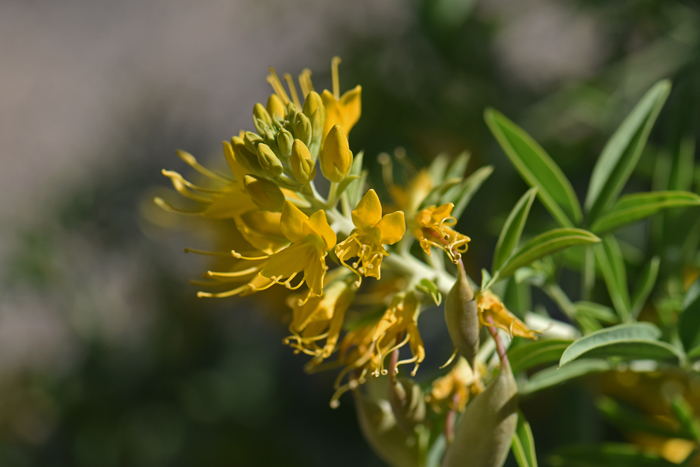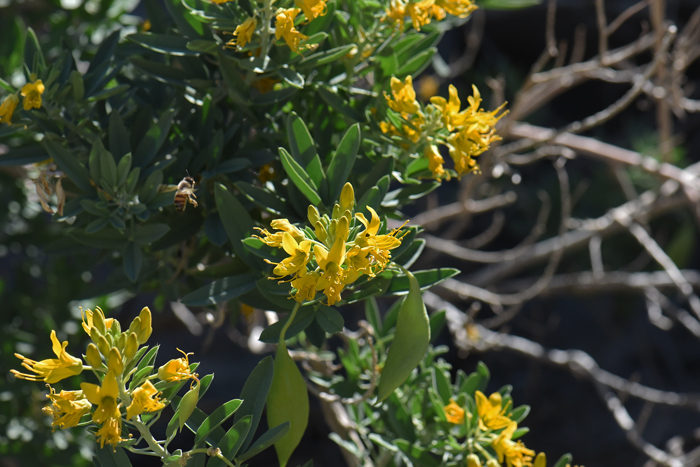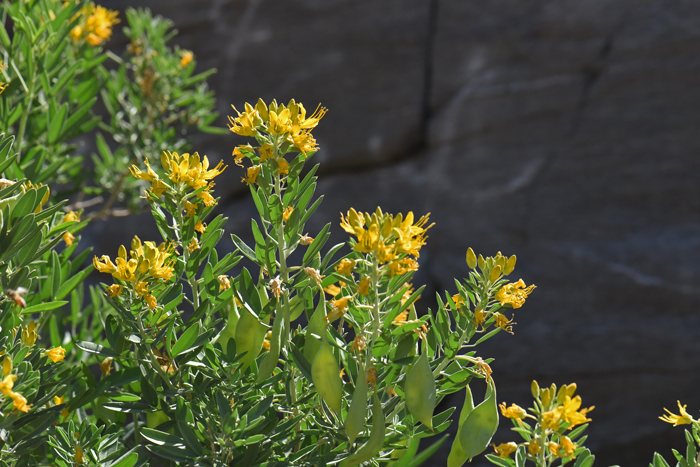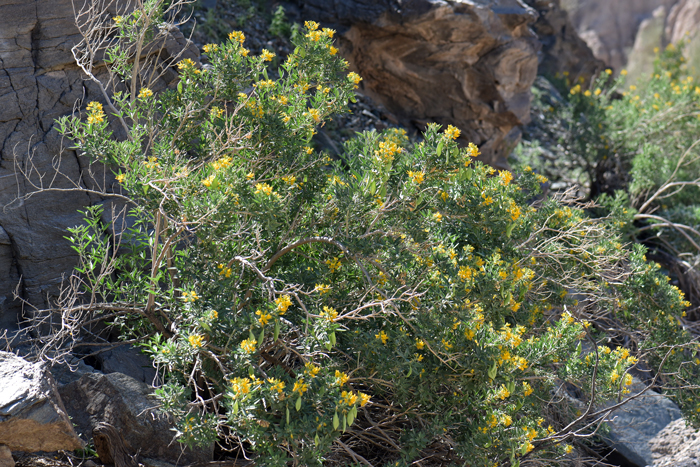Cleome isomeris, Bladderpod Spiderflower
= Peritoma arborea




Scientific Name: Cleome isomeris
Common Name: Bladderpod Spiderflower
Also Called: Bladderbush, Bladderpod, Burro-fat
Family: Capparaceae (or Capparidaceae), Caper Family - Note: The genus Cleome has recently been placed in the Cleomaceae Family)
Synonyms: (Cleome isomeris, Isomeris arborea, Isomeris arborea, Isomeris arborea var. angustata, Isomeris arborea var. globosa, Isomeris arborea var. insularis, Peritoma arborea)
Status: Native
Duration: Perennial
Size: Up to 4 feet more or less.
Growth Form: Shrub, subshrub; rounded form with many branches, minutely hairy pubescence or somewhat glabrous; bark corky, twigs smooth.
Leaves: Green or gray-green; evergreen; short stems (petioles) leaflets 3, palmately compound, mostly oblong-elliptic; margins serrate.
Flower Color: Yellow; inflorescence a raceme; flowers with fused sepals persistent, green, lanceolate in basal ½; petals yellow; stamens also yellow; fruit a capsule.
Flowering Season: January to December.
Elevation: 0 to 4,000 feet.
Habitat Preferences: Hillsides, grasslands, desert washes and flats, roadsides, stabilized dunes.
Recorded Range: Bladderpod Spiderflower is relatively rare in the United States where it is found primarily in southeastern California. It is also native to Baja California and northwest Mexico.
North America & US County Distribution Map for Cleome isomeris.
U.S. Weed Information: No information available.
Invasive/Noxious Weed Information: No information available.
Wetland Indicator: No information available.
Threatened/Endangered Information: No information available.
In the Southwestern United States: Arizona has 4 species of genus, California has 5 species, Nevada has 4 species, New Mexico has 3 species, Texas has 5 species, Utah has 2 species. All data is approximate and subject to taxonomic changes.
Note: The genus Cleome has been reclassified by some authors to the genus Peritoma and Bladderpod Spiderflower to Peritoma arborea.
Comments: The common name "Bladderpod" is a reference to this plants seed pods which look like swollen pea pods.
Cleome isomeris has been used for as food by southwestern United States indigenous peoples.
See ethno-botanical uses at Native American Ethnobotany, University of Michigan, Dearborn.

